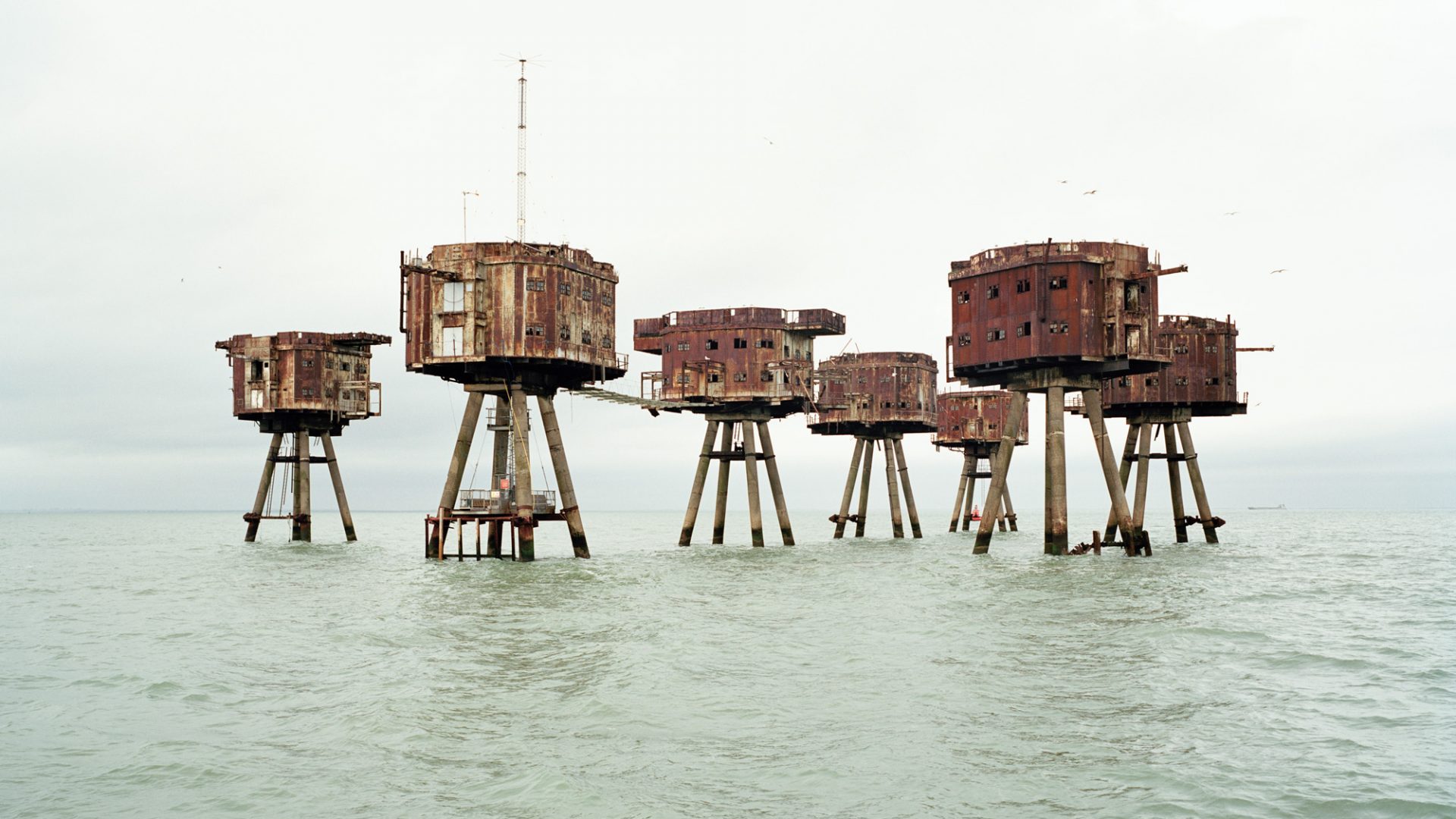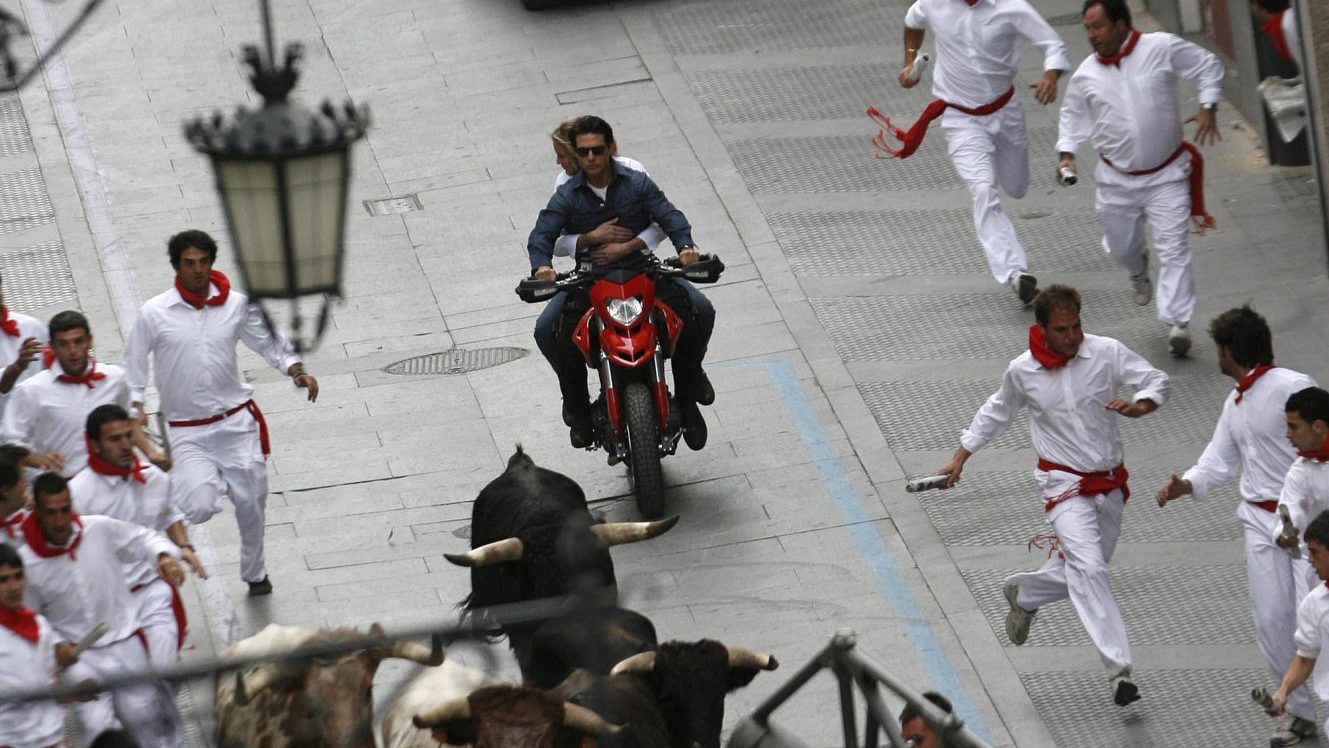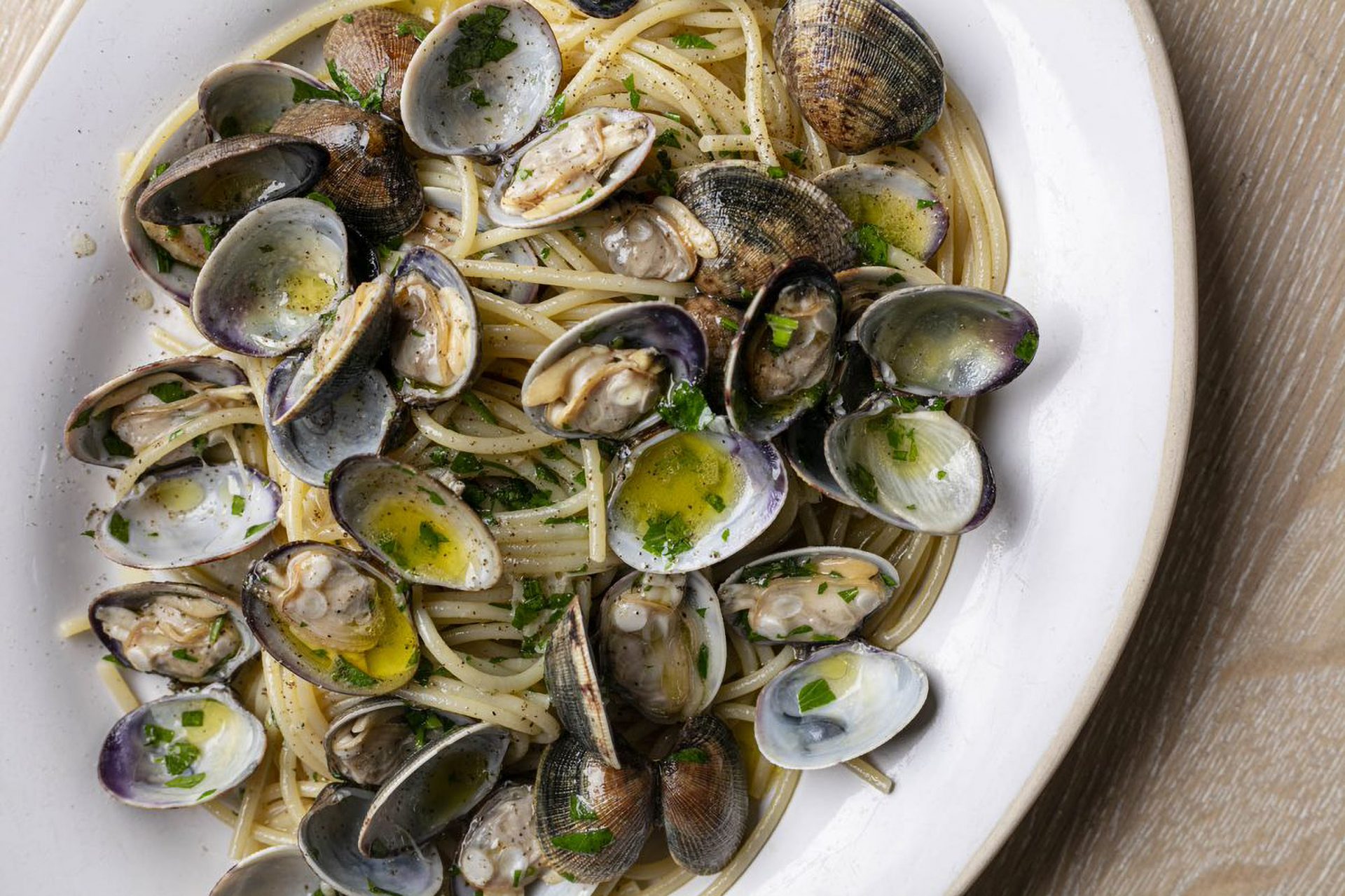Once a year a file of vergers, deacons, even a bishop, process
from Southwark Cathedral on the south bank of the Thames to the middle of London Bridge.
There they meet priests from St Magnus the Martyr on the north. After a short ceremony to celebrate Epiphany, the day the Magi appeared before the newborn Christ, they bless the river and cast a wooden cross into the murky waters.
It’s something of a surprise to discover that such a ritual takes place in the 21st century – and on one of London’s busiest bridges at that – but the unexpected is the essence of a collection of photographs by Chloe Dewe Mathews, Thames Log, which are on view at the Martin Parr Foundation gallery in Bristol and brought together in a new book.
The photographs trace the flow of the river from its nondescript source in a muddy field in Gloucestershire to the wide grey waters of the estuary 210 miles away, capturing the people who are drawn to its banks such as the Pentecostalists at a mass baptism in Southend, a solitary angler in Rainham Marshes or extrovert pagan dancers in Oxford.
The project is something of a departure for Dewe Mathews who documented a walk around the Caspian Sea, and composed a moving series, Shot at Dawn, which recorded the sites in France and Belgium where about 1,000 Allied soldiers were executed for cowardice or desertion during the First World War.
So, why the Thames? She explains: “I was shooting Caspian in 2010, going and coming back over many months and reflecting why I wasn’t making work at home. It became a challenge to myself: if you are going all the way overseas to work why not do something close to home?
“My answer to myself was that a lot of the things which happen in the Caspian region don’t happen here but almost as soon as I said it, I told myself that I should open my brain and find that, of course, it does.”
The result is a collection that is moving, beautiful, incongruous and intriguing. And poetic. Many poets have been captivated by the river – Oscar Wilde, William Morris, Alexander Pope, Andrew Motion – and Dewe Mathews admits: “When you take on an issue which is as loaded with history and art as the Thames it is quite overwhelming in a way, but at the same time just as a river replenishes itself all the time and is constantly changing I had to come up with different responses to it. In some ways, I was very inspired by the literature and the poetry and the art of the past but was I delighted to see what was happening right now.”
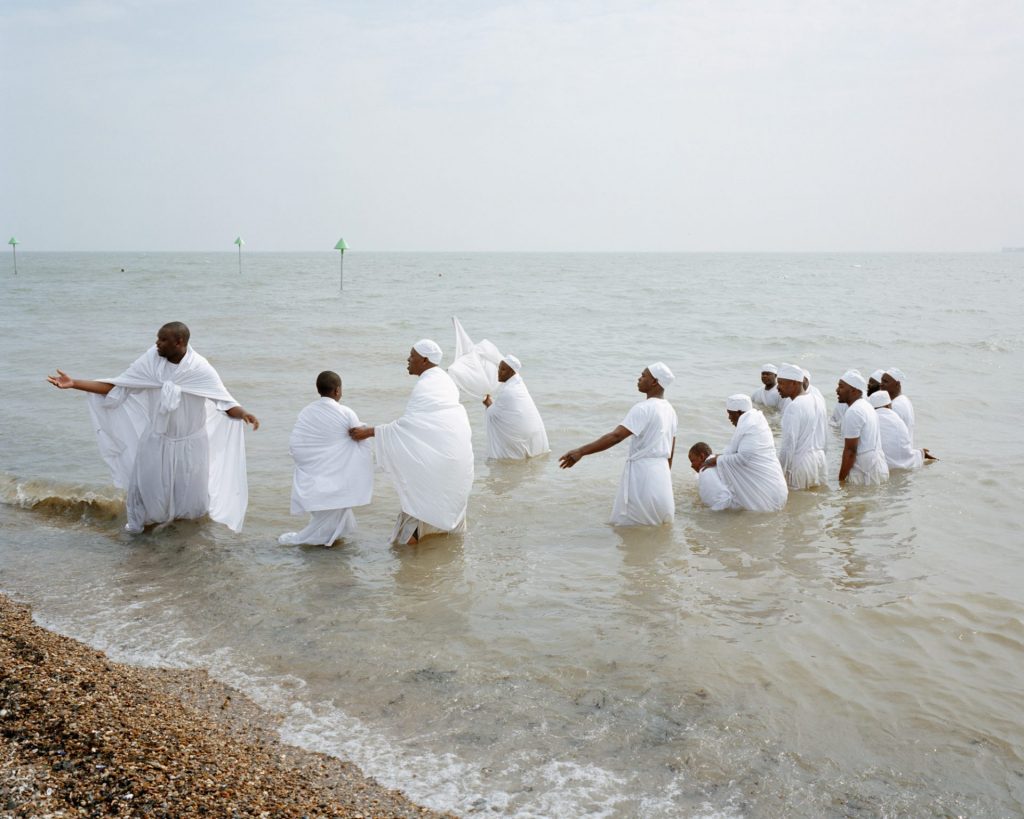
In William Wordsworth’s poem Composed upon Westminster Bridge, September 3, 1802, he wrote how “The river glideth at his own sweet will”, and for five years, Dewe Mathews, who grew up near Hammersmith Bridge in west London, spent her free days following her own will. She wandered up and down footpaths, on the banks at low tide, seeking out the unexpected in an England and a Thames which she found was not just about university boat races and Royal pageants.
“I was constantly reading history books, cultural histories, poetry, all sorts, especially things from the past which alerted me to what might be happening now. Sometimes I stumbled over someone doing something, or I’d be tipped off or find an event on the internet like the blessing of the river and turn up on the day.
“I was searching for religious rituals on the Thames and ways people connected to the river because I had assumed that no one connected to the river like that in this country.”
Although her wanderings were often random, the photographs are in geographical order, from Gloucestershire in the west to the river mouth. They begin with an empty honey jar half-hidden in a tree trunk near Kemble in the Cotswolds. Who knows what it means or who put it there.
In the brief notes at the back of the book, she asks: “An offering? Unidentified symbols drawn on label.” It is left to us to conjecture.
There is nothing secretive about the ritual burning of a rowing boat in an Oxford college quadrangle which took place after its crew had won a race in May 2013. It is a tradition which is dying out – a boat like that is expensive – but the blazing vessel has something of the Viking funeral pyre about it.
As Marina Warner writes in the introduction: “The ritual here is sacrifice, the more valuable the offering the more efficacious and the more gratified and merciful do the gods become.”
Quite a contrast to the pagan ritual in which three women gather on the riverbank in Oxford and dance in the spirit of the Three Graces, daughters of the gods who spread joy and friendship.
It’s all artless charm, summer frocks and awkward poses in a cavort which involves a chalice, a knife and a Hokusai print of The Great Wave, a nod perhaps to Mount Fuji, the symbol of life and spirituality.
The quest for bankside rituals was sparked by a photograph Mathews chanced on from 1883 of women being baptised near Cricklade in Wiltshire which was reputed to be the last baptism in the Thames.
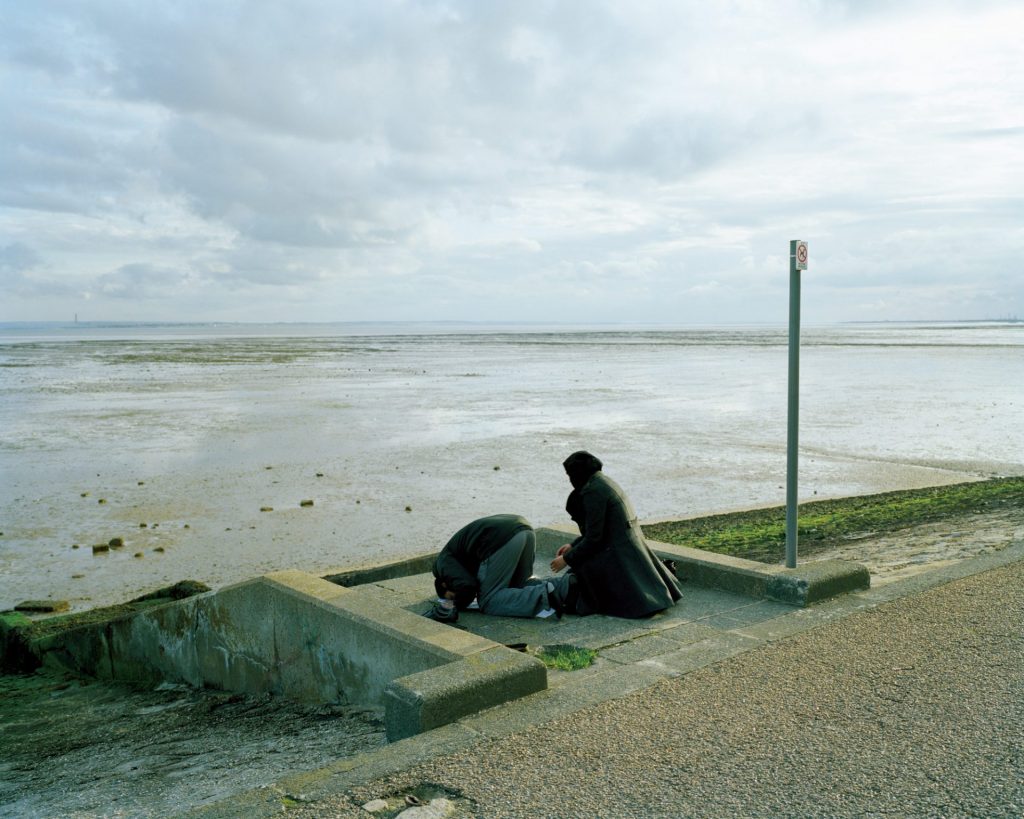
“I remember thinking, what a shame these things don’t happen anymore but equally I wondered if there were any low-key small things happening today.”
And lo, she was delighted to come across a crowd of mostly young people near Oxford, watching on enthusiastically as their fellows were dunked in a mass baptism.
She was just as surprised to learn that for many Hindus in Britain, the Thames has become almost as significant as the Ganges in their hereditary homeland.
One group gathers in Richmond, Surrey, to celebrate the birthday of Ganesha, the lord of wisdom, with a flurry of drums, whistles and flags, culminating in the statue of the elephant God being immersed in the water while in Shoeburyness, Essex, at least 2,000 people collect every year to take part in the ritual.
Just as births are celebrated on the waterside so too deaths. In Southend so many people come to scatter the remains of their loved ones that quite often they have to book a time. They celebrate the end of a life with a walk to the end of the pier which stretches more than two kilometres out to sea, where they scatter flowers and petals which drift and dance on sombre waters.
As she wandered along, Dewe Mathews discovered how ritual and routine blurred. A solitary angler sits on the scruffy shore of Rainham Marshes, Essex, in the distance the towers of Canary Wharf. Is he serious about catching fish, or is it part of a comforting routine for him to spend time allowing his thoughts to wander?
In Tilbury three men meet regularly to sit stolidly on a bench in the lee of the customs offices which greeted the Windrush immigrants in 1948. They are ship-spotters, watching the ships sail by and recording every one.
“I wanted to present everyone on an equal level whether it was high religious, low religious, or non-religious,” she says. “All these things happening side by side on the river’s edge, I try to present them in a way to enrich our understanding of how humans relate to the river.”
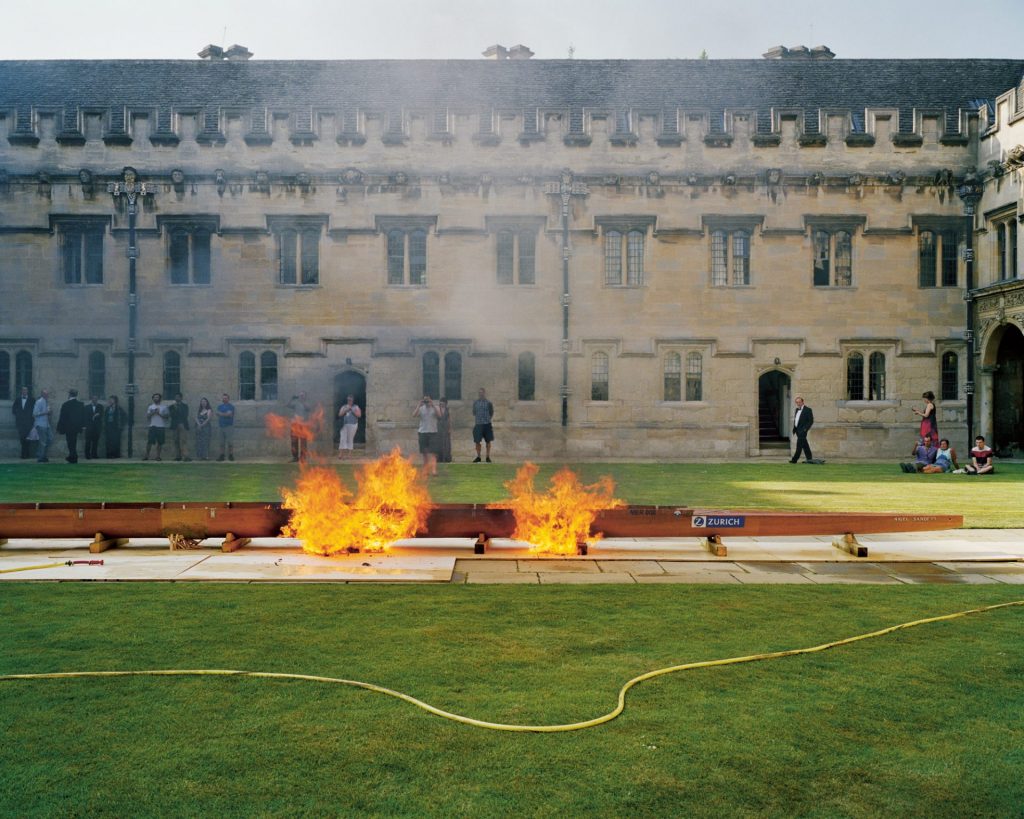
One of her techniques is to allow the camera to roam. Rather than focusing on a close-up of the subject, she uses a wider frame which allows for a kind of randomness, taking in the sprawl of the city and the expanse of the landscape for people to wander in and out of frame in subtle asides.
Just one example; the splendidly eccentric celebration of Isis, the goddess of fertility and also the ancient name for the Thames, deriving from Tamesis, which in the Middle Ages was assumed to be a combination of Thame and Isis.
Staged on London’s South Bank, the priestess with wild blonde hair, flowing pink robes, an amulet and flowery tiara, is clearly the centre of attention but the eye is drawn to a bearded man on the bridge in an orange top looking down in admiration – or is it scorn? A young person at shore level stares into the middle distance, apparently ignoring the theatrics taking place.
There are juxtapositions that help tell the story about multicultural Britain, especially as the camera moves downstream to London and the industrialised communities which line the estuary. While white-robed Pentecostalists gather for a mass baptism in the waters off Southend-on-Sea, four children splash about oblivious to the ceremony happening next to them.
Again in Southend, a Muslim husband and wife, day-trippers from East London, perform their evening prayer. Fifteen minutes later on the same spot, three teenage girls meet for a smoke and a drink.
In Marina Wheeler’s perceptive introduction she talks about the “hauntedness of places and the patient reticence of her (Dewe Mathews’) aesthetic” and the book is punctuated with scenes devoid of people such as a quiet, dappled stretch of the river close to the source, or an arrow mark made of flour daubed on a path in an empty countryside which guides the Didcot Hash House Harriers on their summer solstice run.
These punctuations come to a full stop with rusting sea forts, built six miles out to sea in 1943 as part of the war defences, now eerie remnants striding out of the misty sea like aliens from an old black and white horror film.
To emphasise the impact of the photographs there is next to no commentary. Most sets of images are accompanied by GPS coordinates, dates, tides and weather and only a few terse asides in the index at the back.
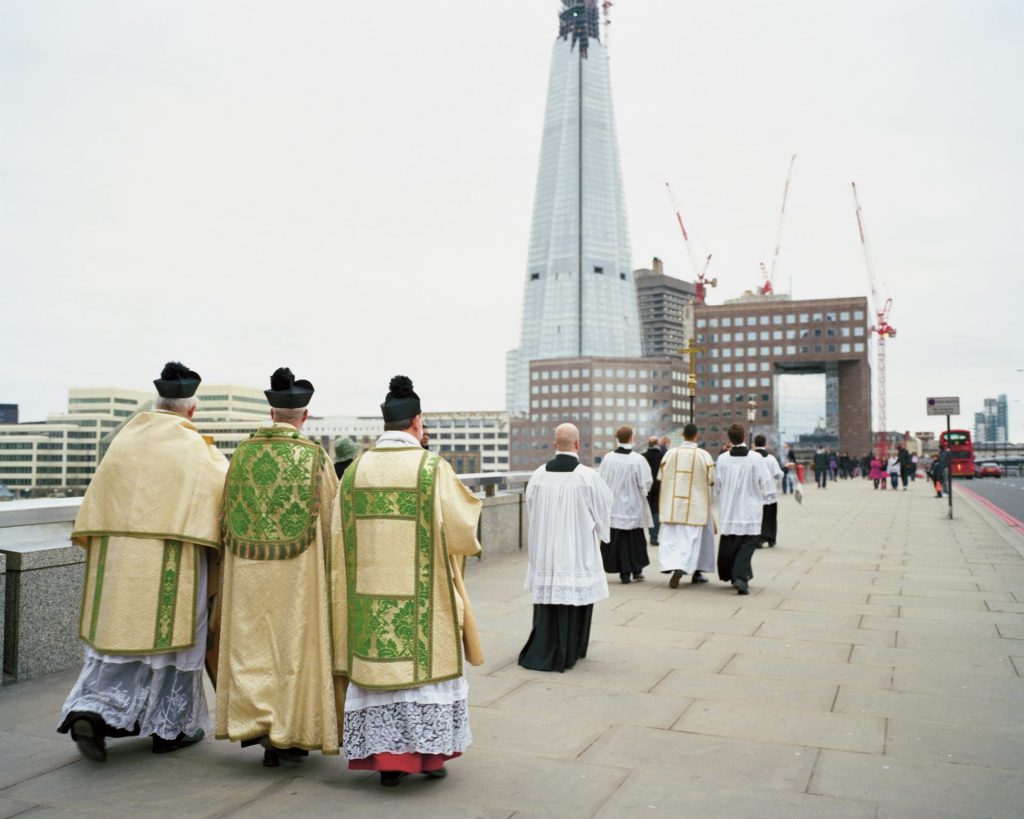
Dewe Mathews explains: “I am never keen to include every bit of information because I want there to be enough space for people to make up their own minds. I think sometimes if people feel all the information is being presented to them they just look at stuff and don’t engage that much or ask questions.”
She came to realise that by coming to the river so often she too had, in an oblique way, become part of the project along with the ship-spotters, the mudlarkers or the solitary soul who has lived in a raft encampment in Twickenham for 30 years, who were also collecting information from the water’s edge.
“I had no sense that I would find so many ways in which people connected to the river or that I would experience such a journey of discovery,” she says.
“It was very exciting, particularly because I had such limited expectations of what I might come across.”
- Thames Log by Chloe Dewe Mathews is co-published by Loose Joints and Martin Parr Foundation. Exhibition runs at Martin Parr Foundation, Paintworks, Bristol until August 29. More information at martinparrfoundation.org and loosejoints. biz


